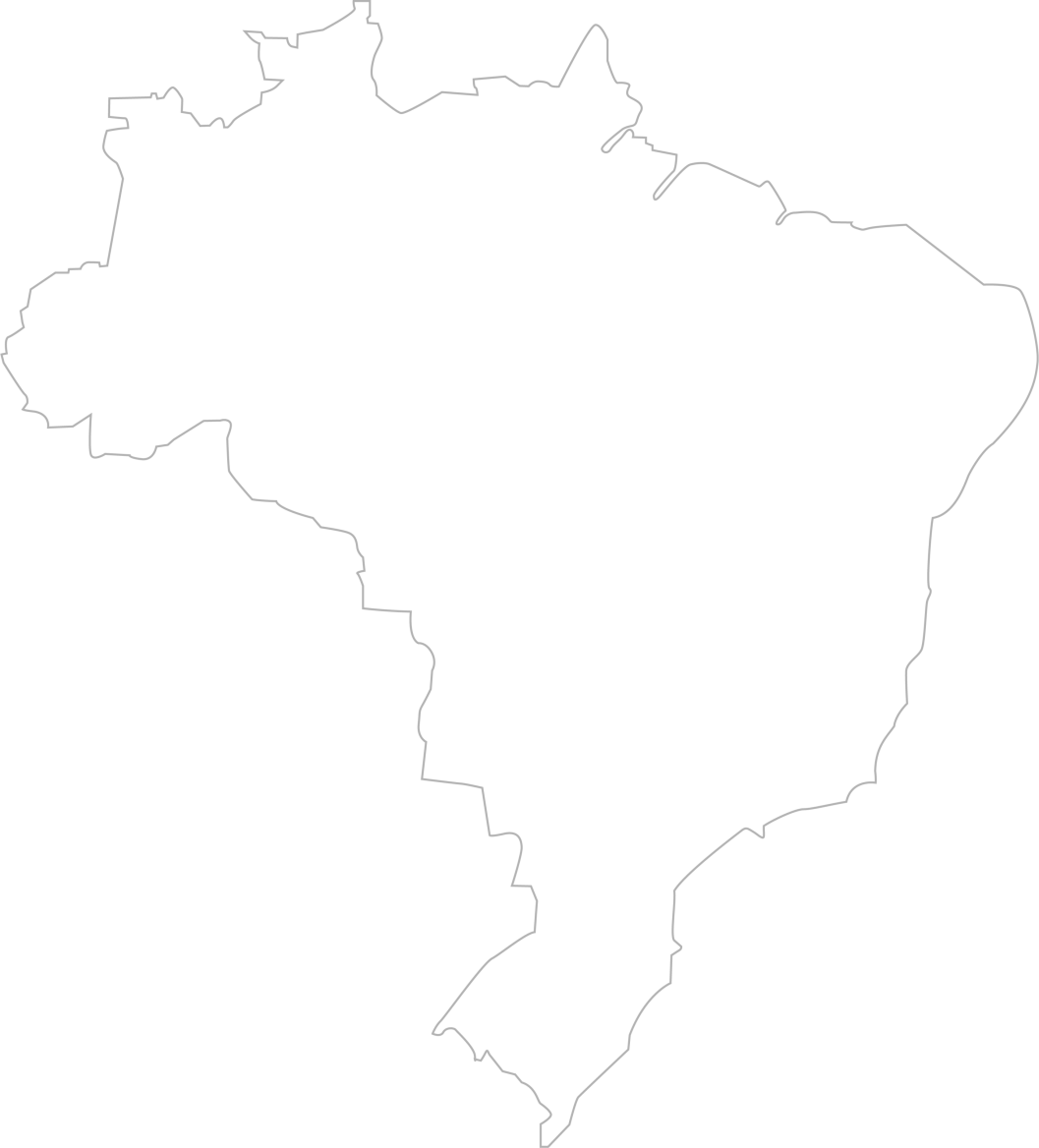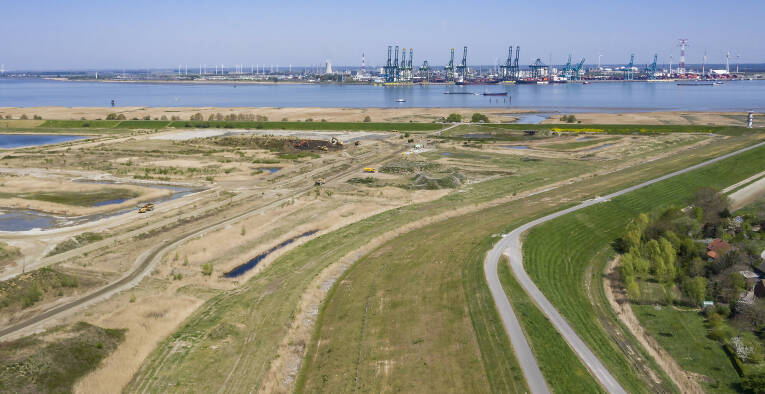
Looking for a partner to realize your land protection project in Southern Americas?
Contact our Area Manager Americas Koen Robijns
Dieter Dupuis
Country Manager Brazil




More vessel details?
Check out our website.
Beach reclaimed
BEACH
length
BEACH
width
2.2 mio m³
5.5 km
70 m

On the beach, the floating pipe connects to a land pipe. Through this pipe, we pump the dredged sand onto the beach.
Bulldozers and excavators spread out the supplied sand over the work area.
We connect a floating pipe to the bow of our vessel. This pipeline pumps the dredged sand towards the beach.
Our Trailing Suction Hopper Dredger pumps sand up from the seabed on a few sand bars in the ocean, where permitted borrow areas are defined for this type of work.
Waves, storms and rising sea levels make a lot of sand disappear from our beaches.
Coastal protection in a nutshell

Googling ‘beach of Camboriú’ results in a lot of hits describing the place as ‘the perfect pit stop to experience the local life’ or ‘a truly relaxing day at a beach resort’. To us, Balneário Camboriú was the office with a view for almost three months.
During this timeframe we widened the beach from 25 m to 70 m over a length of 5.5 km. A total of 2.2 million m³ was reclaimed.

Next to our activities at sea, we also worked hard on land. The reclamation area, where the dredge material was being pumped to, was often filled with a variety of specialised equipment. The goal: to get the sand in place and level it according to the design plan.
Reclamation works are not a nine to five job. Only the weather or – perish the thought – incidents are show stoppers when executing such projects. Luckily, this project contained none of those, meaning we were able to continue the 24/7-dredging works as scheduled.
In the leading role of this reclamation job: our Trailing Suction Hopper Dredger Galileo Galilei. This type of dredging vessel is perfectly fitted for dealing with loose material and soft soils, such as sand.
The vessel dredged sand at locations 15 km off the coast, brought it to the bay and pumped it ashore through an underwater pipeline. Our multicat DN38 was in charge of connecting the floating pipeline.
Fortaleza


Meaipe
Balneário Camboriú
Brazil is increasingly protecting its coastline through beach restoration projects. Wider and more resistant beaches offer better protection against the tides and extreme weather conditions, while they are also an attraction for growing tourism.
Jan De Nul’s Brazilian track record includes beach replenishment projects in Fortaleza and Balneário Camboriú. Later this year, we’ll also reclaim the beaches of Matinhos and Meaipe.
Let’s zoom in on the coastal protection works in Balneário Camboriú.


Hopper Galileo Galilei,
the perfect dredger for beach reclamation works
Iconic carnival festival and talented soccer players like Pelé and Neymar. Exquisite waterfalls, the Amazon rainforest and tropical beaches. Welcome to Brazil. With almost 8,000 kilometres of coastline, the country has many stunning beaches to offer – a major tourist magnet. Come fly away with us to the largest South American country and discover how Brazil protects its beautiful coastline.

BEACH
width
Looking for a partner to realize your land protection project in Southern Americas?
Contact our Area Manager Americas Koen Robijns

Coastal protection in a nutshell
We connect a floating pipe to the bow of our vessel. This pipeline pumps the dredged sand towards the beach.
On the beach, the floating pipe connects to a land pipe. Through this pipe, we pump the dredged sand onto the beach.
Bulldozers and excavators spread out the supplied sand over the work area.
Our Trailing Suction Hopper Dredger pumps sand up from the seabed on a few sand bars in the ocean, where permitted borrow areas are defined for this type of work.
Waves, storms and rising sea levels make a lot of sand disappear from our beaches.



More vessel details?
Check out our website.
Hopper Galileo Galilei,
the perfect dredger for beach reclamation works
Dieter Dupuis
Country Manager Brazil

BEACH
length
Beach reclaimed
70 m
5.5 km
2.2 mio m³

Reclamation works are not a nine to five job. Only the weather or – perish the thought – incidents are show stoppers when executing such projects. Luckily, this project contained none of those, meaning we were able to continue the 24/7-dredging works as scheduled.

Next to our activities at sea, we also worked hard on land. The reclamation area, where the dredge material was being pumped to, was often filled with a variety of specialised equipment. The goal: to get the sand in place and level it according to the design plan.

In the leading role of this reclamation job: our Trailing Suction Hopper Dredger Galileo Galilei. This type of dredging vessel is perfectly fitted for dealing with loose material and soft soils, such as sand.
The vessel dredged sand at locations 15 km off the coast, brought it to the bay and pumped it ashore through an underwater pipeline. Our multicat DN38 was in charge of connecting the floating pipeline.
Googling ‘beach of Camboriú’ results in a lot of hits describing the place as ‘the perfect pit stop to experience the local life’ or ‘a truly relaxing day at a beach resort’. To us, Balneário Camboriú was the office with a view for almost three months.
During this timeframe we widened the beach from 25 m to 70 m over a length of 5.5 km. A total of 2.2 million m³ was reclaimed.

Brazil is increasingly protecting its coastline through beach restoration projects. After all, wider and more resistant beaches offer better protection against the tides and extreme weather conditions. They are also an attraction for growing tourism.
Jan De Nul’s Brazilian track record includes beach replenishment projects in Fortaleza, and Balneário Camboriú, while the beaches of Matinhos and Meaipe will still be reclaimed later this year as well.
Let’s zoom in on the coastal protection works in Balneário Camboriú.
Balneário Camboriú
Fortaleza
Meaipe




Iconic carnival festival and talented soccer players like Pelé and Neymar. Exquisite waterfalls, the Amazon rainforest and tropical beaches. Welcome to Brazil. With almost 8,000 kilometres of coastline, the country has many stunning beaches to offer – a major tourist magnet. Come fly away with us to the largest South American country and discover how Brazil protects its beautiful coastline.


























